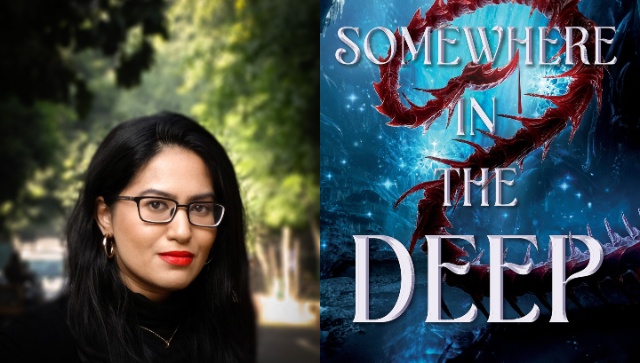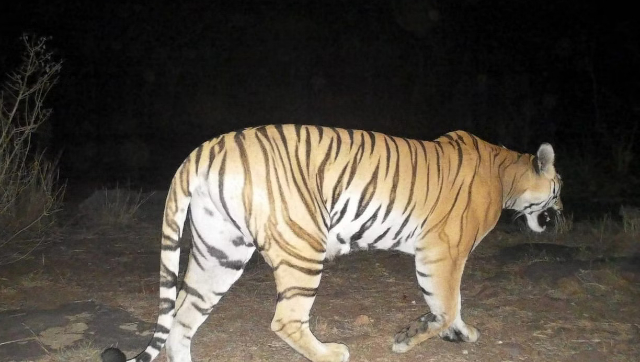The sunlight speaks/ And its voice is a bird: It glitters half-guessed half seen half-heard/ Above the flower bed/ Over the lawn/ A flashing dip and it is gone/ And all it lends to the eye is this/ A sunbeam giving the air a kiss. — ‘The Hummingbird’ by Harry Kemp
Not just poets, ever since we’ve known of their existence, hummingbirds have captivated mankind. From subjects in folklore to stylised icons on pottery, petroglyphs, totems, costumes, and even the monumental geo-glyphs outlined on the desert floor of the Nazca plains of Peru — we’ve seen hummingbirds depicted in a variety of ways.
With over 300 species that range throughout the Americas (they are found only in the New World), hummingbirds form the second largest family of birds in the world. Now, over 127 species of these dazzling little birds have been chronicled in a new book, published by the Gorgas Science Foundation, Texas, and written by noted avian biologist John C Arvin. The book is especially of interest since of the 98 colour plates that stunningly reproduced these hummingbirds in painstaking detail, 54 have been illustrated and painted by two Bengaluru girls — Sangeetha Kadur and Vydehi Kadur.
The panels from the first of the two-volume book were recently on display at the Venkatappa Art Gallery in Bengaluru; the exhibition was brought to the city by the visual arts company Felis Creations, which has been involved in the book project right from the start.
In an interview with Firstpost, Vydehi Kadur and Sangeetha Kadur spoke about the project, and how they brought the hummingbirds to life:
Vydehi, Sangeetha, what was the genesis of this project, and how did you become involved?
Sangeetha: Right after graduating from Chitrakala Parishath, my very first wildlife art project with Jungle Lodges, made it quite clear to me that this is what I wanted to focus on. My brother, (wildlife filmmaker) Sandesh Kadur, took note of my growing passion for the natural world and my interest in wildlife art. He worked very closely with Gorgas Science Foundation and knew there was an art project that had been on their minds for a while. He asked me to work on a few hummingbird paintings, which were later sent to Gorgas approval. Within no time, this project gained a bit of momentum and in 2006, I flew to the US to participate in this project further.
Vydhehi: I am not a trained artist but I have been drawing and painting since my childhood. My parents were incredibly encouraging in this regard. One day, my cousin Sandesh Kadur saw me working on an illustration of elephants and suggested that I try painting hummingbirds. I didn’t know at that time why he asked me to, but decided to try my hand at it. My first attempt did not end well but after a few more attempts, studying the bird’s anatomy, looking and learning from numerous photographs and videos and guidance from Sangeetha, I managed to get a few paintings together and sent them to Gorgas for their approval. After reviewing my work, Gorgas took me on as one of the three artists on this project!
What was the process of working on the book like?
Sangeetha: Though this book project got positive support during my visit to the US, there was much research to be done before the artworks could commence. We had assigned ourselves a monumental task of illustrating the second largest family of birds in the world! The 330 species wouldn’t fit into one book, so the arduous task of splitting this big family into two separate volumes fell upon us. After having put this structure in place and getting a researcher on board, the illustrations commenced in 2008. The artist team (Raul Andrade, Vydhehi and me), took about 4-5 years to illustrate the 127 species for the first Volume. Another 3-4 years to compile the information, publish and bring the book to life!
Vydhehi: By the time I came on board, much of the research was done. However, as we finished the plates, they would be sent to the author (John C Arvin), and the ornithologist John ‘O Neil for their inputs. They would get back to us with notes and this would help us improving our plates or recreating them.
What for you was the most challenging aspect of recreating the hummingbirds and their specific habitats?
Sangeetha: Living in the Old World without a hummingbird to spot, we had a big challenge of capturing the hummingbirds of the New World! As Vydhehi and I hadn’t observed these birds in real life much, we had to be more cautious in our approach in depicting them accurately. This required in-depth reading, research and we scanned hundreds of photographs of the species whenever they were available. For me, the challenging aspects were to capture its anatomy, proportions, colour and its glamorous iridescence.
Vydhehi: The most challenging aspect was to ensure that everything we depicted had scientific backing. We had to learn about the bird before we started painting them. Each bird had to be meticulously studied… the right habitat, the right flowering plant, the right proportions, the right behaviour, the right colours…in a book like this there was no room for errors.
What is the medium you’ve worked with? Is it mostly watercolour on paper?
Sangeetha: All artists worked with some set protocols as we were depicting one family of birds for a standardised book format. We mostly worked with acrylics on an archival Arches watercolour paper, set to a particular size.
Vydhehi: I have used mostly acrylics with a mix of watercolours on paper.
One hundred and twenty-seven species of hummingbirds — how do you even begin to portray them all? Did the panels ever start to feel repetitive to you because it was the same subject matter? Sangeetha: There are so many behaviours associated with each of these hummingbirds. So many plants that they have particularly co-evolved with. There was never a lull moment. Though green has been the colour that has been most extensively used in each and every plate, may be at one point it got a wee bit overwhelming, but it was nothing to complain about; and green still remains my favourite colour!
Vydhehi: It was never repetitive or tiring. When we were assigned a species, it was like meeting a new character. Each species had its own unique features, habitat and behaviour and in our minds we had so many ideas on how to portray them. We are very eager to start working on Volume II of the book, which has 263 species!
What did you learn about hummingbirds while working on the book that yo hadn’t known before?
Sangeetha: The entire experience of illustrating them has been a tremendous learning process. Their interesting co-relationships with particular plant species has been my most intriguing take-away. From knowing the most basic general knowledge facts about these birds, we grew to understand their lives so much more intimately.
Vydhehi: When I started the project the only thing I knew about hummingbirds was that the smallest bird belonged to this family. Once I started reading more and more I realised I knew very less about this species. For instance, I never knew that some hummingbirds grow up to 30-35 cm, that’s over a foot long! I did not know that they were found only in the Americas. And so with every bird I learnt something new, something unique, so the learning never stopped.
Why do you think we feel this particular fascination with hummingbirds? People tend to think of them almost as magical in a sense…
Sangeetha: They certainly seem so surreal. One second you see them and the other second they vanish. So tiny, so fast. When they fly, you rarely get a fulfilling glimpse of them; and when they perch, they are so well camouflaged, that it is hard to spot them. Their jewel-like gorgets and crests shimmer with a speck of sunlight… it seem so unreal at times and yet so breathtaking. Somehow their elegance seems to easily capture our hearts.
Vydhehi: They are magical creatures…there are few creatures in the animal kingdom that people share an instant bond with and hummingbirds are one of those. People have been fascinated by these birds for centuries. They may be found only in the Americas but people instantly recognise them and share a connection with hummingbirds across the world.


)




)
)
)
)
)
)
)
)